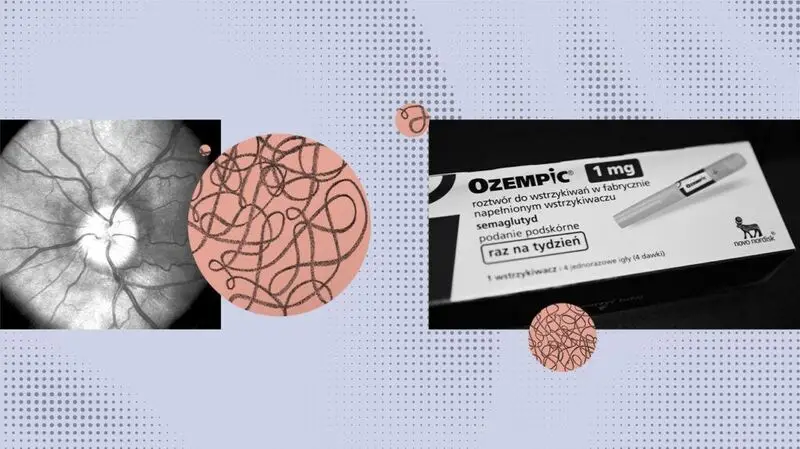
- Two large studies from the University of Southern Denmark suggest that the diabetes medication Ozempic doubles the risk of developing NAION, a rare but serious condition that damages the optic nerve.
- Drawing on comprehensive data from Danish and Norwegian health registers, the studies validate earlier concerns raised in a smaller American study.
- While the absolute risk remains low, researchers suggest the findings should guide discussions between doctors and patients about the benefits and risks of treatment with Ozempic.
Two research teams conducted separate studies using different methods to analyze all Danish users of Ozempic.
These new register-based studies from SDU corroborate a concern previously highlighted in a smaller
The American study found that Ozempic more than doubles the risk of non-arteritic anterior ischemic optic neuropathy (NAION), a rare condition that damages the optic nerve.
In the first
This condition, caused by a sudden loss of blood flow to the optic nerve, can result in severe and permanent vision loss.
In the second Danish study, which is yet to be published in a peer-reviewed journal, researchers categorized patients into two groups: those treated with Ozempic and those who received alternative treatments.
This study focused on a smaller, more specific group of patients with type 2 diabetes.
This research also revealed that the risk of developing NAION doubles for those taking Ozempic.
However, the researchers emphasized that their findings are not intended to discourage diabetes patients from continuing their treatment with Ozempic.
While untreated diabetes can cause various eye complications, these are generally less severe but more common than the optic nerve damage associated with NAION.
Lead author Anton Pottegård, M.Sc. Pharm., Ph.D., Dr. Med. from the Institute of Health Services Research, University of Southern Denmark, spoke to Medical News Today.
“The core finding I guess is the simple fact that we see more cases of NAION, a very rare but serious disease of the optic nerve, among users of semaglutide than among users of other antidiabetic medications. This finding is very consistent across all the analyses we’ve tried coming up with. While we don’t know why this happens, it seems the drug increases the risk of this disease.”
— Professor Anton Pottegård
A representative from Novo Nordisk, the manufacturer of Ozempic, told MNT that “NAION is a very rare eye disease, and it is not an adverse drug reaction for the marketed formulations of semaglutide (Ozempic, Rybelsus and Wegovy) as per the approved labels.”
“After a thorough evaluation of the studies from the University of Southern Denmark and Novo Nordisk’s internal safety assessment, Novo Nordisk is of the opinion that the benefit-risk profile of semaglutide remains unchanged,” they said.
“While both studies showed a roughly doubling of relative risk, the absolute risk and absolute number of people affected is very low. This aligns with the very low annual incidence of this rare disorder. One of the studies found that 2 people per 10,000 patients treated with semaglutide in a year developed NAION versus 1 out of every 10,000 in the comparator group, concluding that the absolute risk is very low. The studies did not demonstrate a causal relationship between semaglutide and NAION.”
— Novo Nordisk
“The short-term implications are few,” Pottegård explained, “in the sense that the vast majority of patients should continue their treatment and that this clearly does not change the overall risk-benefit profile of the drug.”
“That said, there is the specific short-term implication in that patients that have experienced eye problems that could be NAION should probably contact their physician and, if confirmed, should stop using the drug,” Pottegård said.
“Patient safety is a top priority for Novo Nordisk, and we take all reports about adverse events from use of our medicines very seriously. This also relates to eye conditions, which are well-known comorbidities for people living with diabetes. Any decision to start treatment with prescription-only medicines should be made in consultation with a Healthcare professional who should do a benefit-risk evaluation for the patient in question, weighing up the benefits of treatment with the potential risks.”
— Novo Nordisk
Three experts, who were not involved in these studies, spoke to Medical News Today.
Benjamin Bert, MD, board certified ophthalmologist at MemorialCare Orange Coast Medical Center in Fountain Valley, CA, said that these studies “presented are very interesting as this is still a fairly new class of medication, having only been around for a few years.”
“Our knowledge of the full extent of the medication’s side effects is still being discovered. In these papers, the researchers identify a significant increase in NAION in a large population of diabetic patients who are undergoing treatment with Ozempic,” Bert said.
“While this finding is concerning, especially given that there’s no treatment for NAION at this time, each individual’s risk and benefit of treatment with Ozempic needs to be discussed,” Bert explained.
Mark A. Anton, MD, medical director at Slimz Weightloss, agreed, saying, “for patients, it’s crucial to balance the potential benefits of semaglutide with these risks.”
“It emphasizes the importance of regular monitoring and open communication with healthcare providers to tailor treatment plans to individual needs and risks.”
Howard Krauss, MD, surgical neuro-ophthalmologist and director of Pacific Neuroscience Institute’s Eye, Ear & Skull Base Center at Providence Saint John’s Health Center in Santa Monica, CA, said that “type 2 Diabetes Mellitus (T2DM) is one of several risk factors in the occurrence of NAION and one presumes that the influence of T2DM on the incidence of NAION may increase with the duration and severity of the disease.”
“As the authors note: “our study cannot claim a causal relationship,” Kraus highlighted.
Krauss also warned of the potential harm of “scaring physicians or patients away from a medication which reduces the morbidity and mortality associated with T2DM.”
This is because NAION is rare to begin with, and even with an increased incidence, it remains a rare condition.
Krauss highlighted the potential harm done when the media publish stories about rare side effects “leading to unfounded fear in the public mind.”
“A retrospective review of this nature should be published with editorial caveats to minimize public misperception. A report of this nature should lead to scientific testing of a hypothesis which may be proposed, that semaglutide may trigger NAION, but at this time it is nothing more than a hypothesis.”
— Howard Krauss, MD
However, reporting rare side effects and informing the public about them is an important aspect of pharmacovigilance.
NAION as a potential side effect of semaglutide, the active ingredient in Ozempic, has already been under review, and the new findings will be incorporated into ongoing evaluations.
Pottegård noted that “if the regulators find this to be a likely causal link, the many emerging drugs in this class should be scrutinized for the same effect.”
“Also, this should lead to research into the actual prevalence of the problem (which might be underrecorded using the highly specific diagnostic requirements used in our studies), research into the underlying mechanism (currently unknown) and research into the identification of patients at risk of this adverse effect,” he said.





